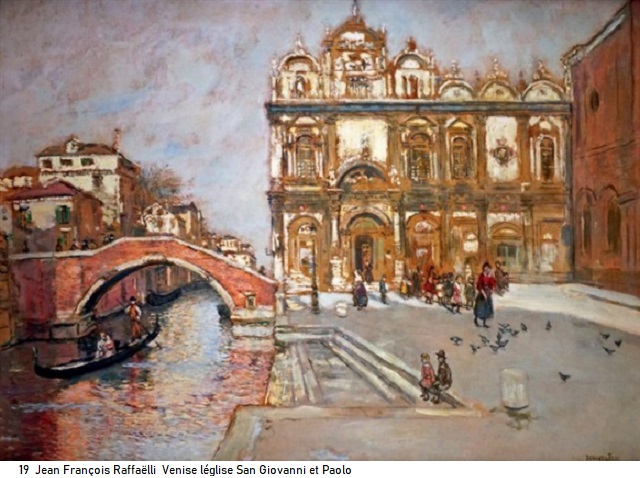Post 178 -by Gautam Shah
.
SUNDAY Feature on ART of Architecture -by Gautam Shah
Jean Francois Raffaelli (1850-1924) was a French realist-impressionist painter, sculptor, and printmaker. As a youngster he had keen interest in music and theatre before becoming a painter in 1870. He, until 1876 produced costume pictures of peasants, workers, and rag-pickers in a realistic manner. His early style reflects strong impressionism of Monet and Sisley.
He travelled to Italy, Spain and Algeria and on return to France settled in Asnières. His early attempts at painting were genre scenes, but once he was settled in Asnières he started to paint picturesque views of Parisian suburbs. From 1879 onward, his subject matter drew on the lives of local people. A new direction in his art occurred in 1892 with the relocation to Rue de Courcelles, Paris. Now he began to paint colourful views of the streets, squares and parks of Paris.
Degas invited Raffaelli to participate in the Impressionist exhibitions of 1880 and 1881, but Monet, resented action by Degas. Raffaelli, classified himself, ‘Le Caractère’, a mix of realist, impressionist and Naturalist manners. From Impressionists, he learnt to draw in a sketchy way and subject matter from contemporary life.
His emphasis was on drawing, not on colour. Raffaelli ’s dark palette, ran contrary to the Impressionist aesthetics. The effect of sunlight on the colours is consistent seen. Towards the end of his life, he lightened his palette. He introduced a new technique in printmaking whereby up to five plates were used to create a dry-point etching.
.


































No comments:
Post a Comment